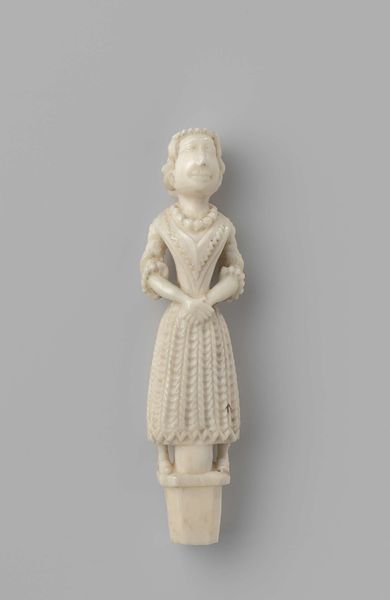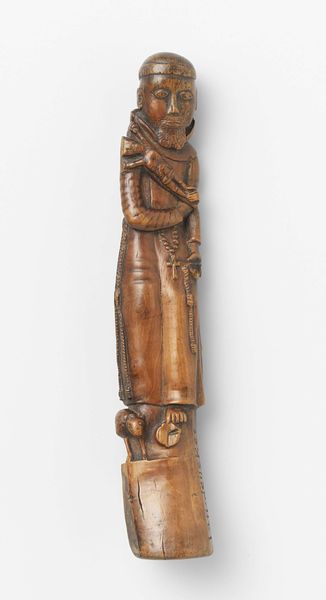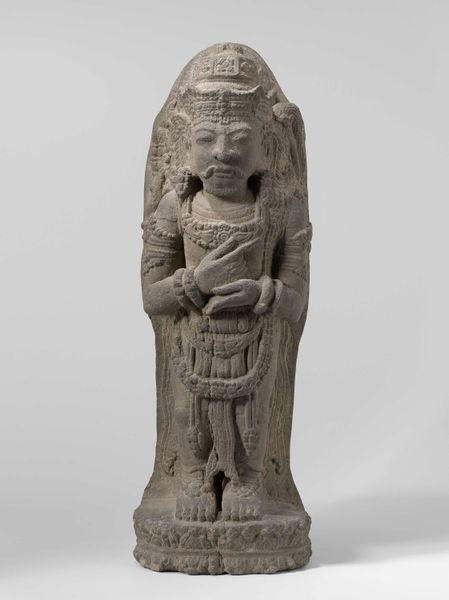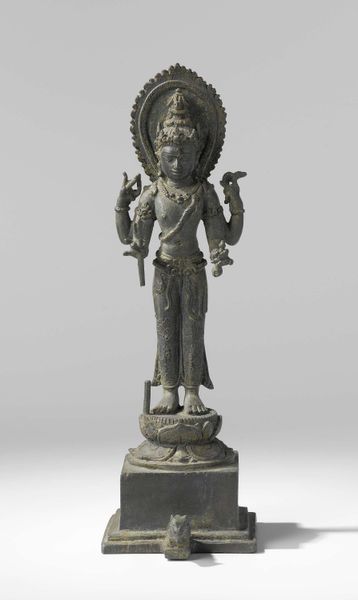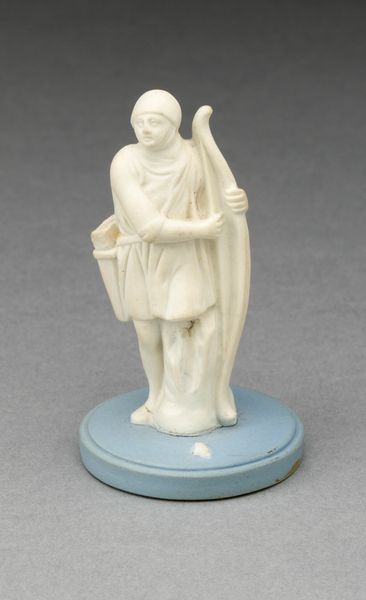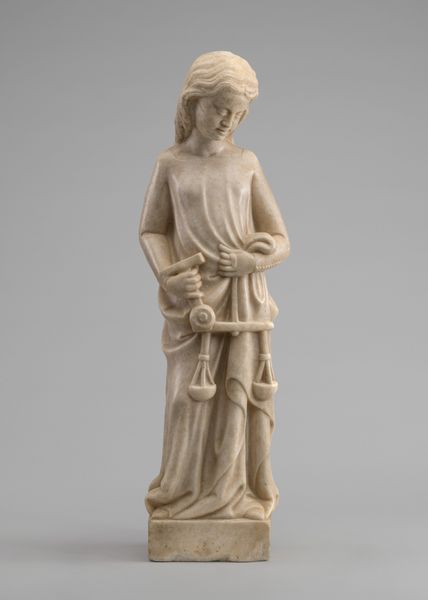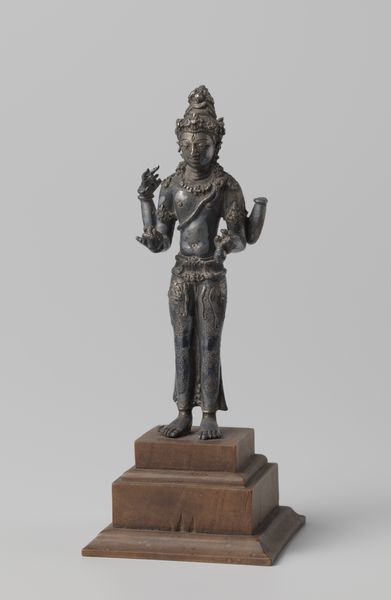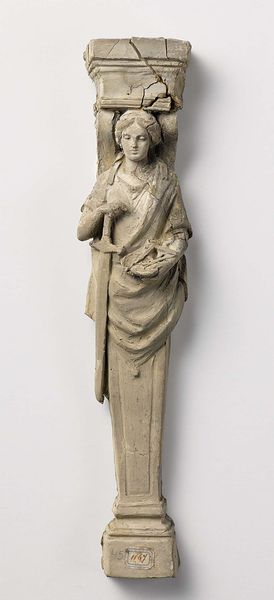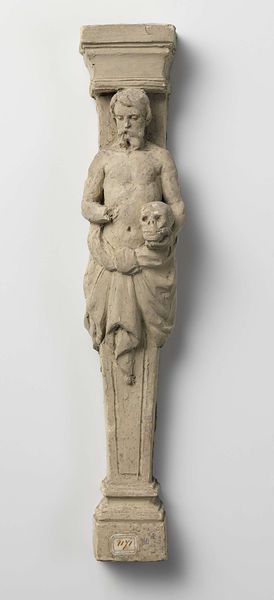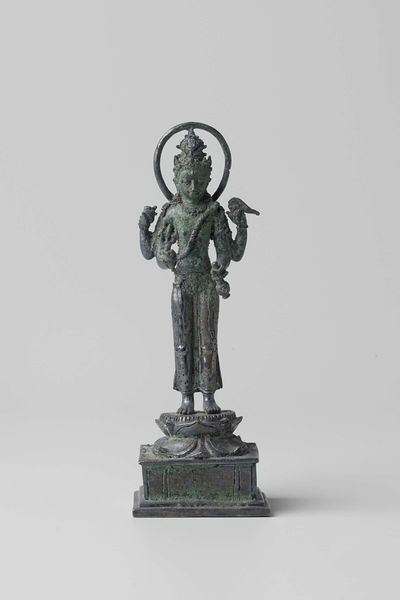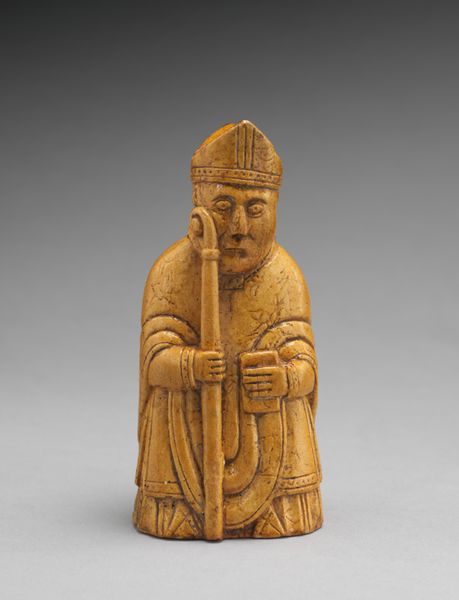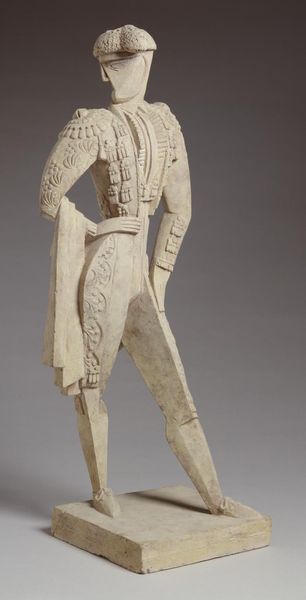
carving, wood
#
portrait
#
carving
#
baroque
#
figuration
#
wood
#
miniature
Dimensions: length 9.7 cm, width 2.1 cm, depth 1.2 cm
Copyright: Rijks Museum: Open Domain
Curator: Let's discuss this fascinating baroque object from the Rijksmuseum collection: a knife handle carved with the likeness of Prince William III, dating roughly from 1689 to 1702. The piece is crafted from wood using a meticulous carving technique. Editor: It's tiny! He looks a bit…smug, doesn’t he? Almost comical. The detail for something so small is really quite stunning. How would they even carve something that minute out of wood without the whole thing falling apart? Curator: Precisely. Consider the skill required for such detailed figuration in miniature. The process involves highly specialized carving techniques. It's likely that a specialized workshop or craftsman was involved, catering to the market for luxury goods of this nature, or even possibly using this to promote an image of a political figure. The choice of material—fine wood—further emphasizes the value placed on this object. Editor: Right, it's like a little wooden superhero bobblehead. A Baroque power play reduced to pocket-sized… cutlery? What does that say about how someone viewed leadership then? Maybe the wielder feels like a king whenever he’s slicing up cheese. Absurd! Curator: Yes, but beyond personal gratification, the handle also serves as a political artifact. It suggests the active creation and circulation of a ruler's image through quotidian objects. Who crafted it, who bought it, how widely images of William III circulated, and to what effects? Editor: Still, this feels so removed from royal grandeur – reducing power to this everyday mundane object seems cheeky somehow, doesn't it? Maybe this thing offered up a secret wink—privately amusing for both the maker and the buyer! Curator: Perhaps. However, seeing it as simply “cheeky” overlooks the material conditions and labor required to make this "wink" accessible in society. Editor: Well, I’ll still wink at its absurdity! So detailed and strange. Almost unbelievable someone cared to carve it at all! Curator: In the end, it gives us insight into how objects of daily life functioned to carry and reinforce socio-political power through images of influence in early modern Europe.
Comments
No comments
Be the first to comment and join the conversation on the ultimate creative platform.
